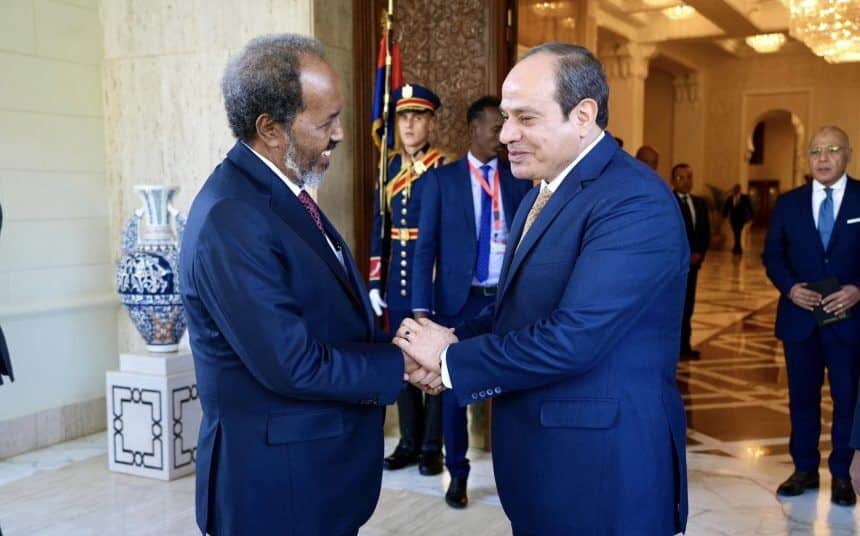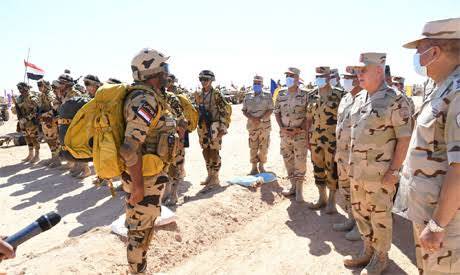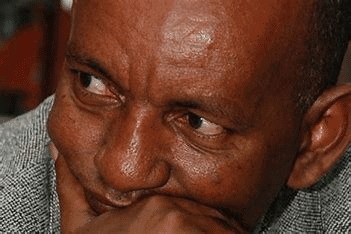
Egypt has revealed a new security partnership with Somalia, which entails the deployment of Egyptian troops in Somalia to work in collaboration with Somali forces. This initiative aims to enhance regional security in accordance with the revitalized African Union stabilization efforts in Somalia. The timing of this security agreement is particularly significant, given the current climate of increased tension and instability in the area. Notably, Ethiopia has voiced strong opposition to the arrangement, alleging that certain parties are engaging in actions that threaten to destabilize the region. This announcement follows a recent bilateral meeting held in August between Egyptian President Abdel Fattah al Sisi and his Somali counterpart.
The discord between Egypt and Ethiopia is fundamentally rooted in disputes over water resources
The longstanding tensions between Egypt and Ethiopia primarily stem from disputes over water resources. In 1959, Egypt entered into the Nile Waters Agreement with the newly independent Sudan, which aimed to regulate the distribution of water from the Nile River. Notably, Ethiopia was not represented at the negotiations that culminated in this agreement.
With the assurance of water flow through Sudan established by this treaty, Egypt commenced the construction of the Aswan High Dam in 1960, shortly after the agreement was finalized. This dam significantly transformed Egypt’s developmental landscape, enhancing agricultural productivity and enabling the generation of hydroelectric power.
Ethiopia, aspiring to achieve similar developmental benefits, undertook the construction of the Grand Ethiopian Renaissance Dam, a substantial project on the Blue Nile that reached completion in 2023. As with all hydroelectric dams, the Grand Renaissance Dam requires a considerable volume of water to fill its reservoirs and operate its turbines, consequently diminishing the water supply available to downstream nations by an amount approximately equivalent to the reservoir’s capacity. In this instance, the Grand Renaissance Dam results in a reduction of downstream flow by about 74 billion cubic meters at any given time.
To date, the completion of the dam and the subsequent filling of its reservoir have not resulted in an outright catastrophe for Egypt. However, the potential ramifications by the middle of the century could be significantly more severe. Projections indicate that Egypt’s population may exceed 160 million by 2050, which would place immense pressure not only on drinking water supplies but also on other critical resources. From a geopolitical perspective, the Grand Renaissance Dam effectively shifts control over Egypt’s crucial water resources to an external entity. This development enables the Ethiopian government to manipulate the flow of the Nile according to its own developmental priorities, thereby impacting Egypt’s water security.
This situation renders Egypt exceedingly vulnerable, as its survival is intricately tied to the Nile River. For instance, the Egyptian foreign ministry has reported that even a slight 2% decrease in water flow from the Nile could result in the loss of approximately 81,000 hectares of irrigated agricultural land. Conversely, for Ethiopia, the dam is vital for fulfilling its increasing energy requirements and sustaining its rapid economic growth, as evidenced by the rising GDP per capita. The contrasting needs of the two nations underscore the complexities of water resource management in the region and highlight the potential for conflict over this essential resource.
The Broadening Geopolitical Landscape of Egypt-Ethiopia Conflicts

The geographic dimensions of the rivalry between Egypt and Ethiopia are currently broadening as their water dispute intensifies. In January, Ethiopia entered into a memorandum of understanding with the self-declared state of Somaliland, a region that the international community recognizes as part of Somalia. In reaction, Egypt demonstrated its support for Somalia, complementing this with a security agreement and a recent high-level meeting, during which Egyptian President Abdel Fattah al-Sisi affirmed his nation’s commitment to assist a fellow Arab state. Although the Somali people largely represent a distinct ethnic group with their own language, the prevalent use of Arabic and cultural affinities with the Arab world enable both Somalia and the Somali-majority region of Djibouti to be part of the Arab League.
By aligning itself with Somalia, Egypt aims to exert additional pressure on Ethiopia. A particularly delicate matter arises from the demographic division of ethnic Somalis in the Ogaden region of southeastern Ethiopia, which stands in contrast to the predominantly Oromo and Amhara populations that make up the majority of Ethiopia. This area was the focal point of a brief conflict in the late 1970s when Somalia’s then-president Siad Barre sought to incorporate the Ogaden region into Somalia. Although Somalia ultimately faced defeat in this conflict, the backing from the Soviet Union and Eastern Bloc for Ethiopia under the Derg military regime was instrumental in the failure of Barre’s forces. This defeat catalyzed a rebellion in 1978, which ultimately contributed to the collapse of the Barre regime in 1991.
Although tensions between Egypt and Ethiopia are escalating, the likelihood of a full-scale war occurring remains low. The two nations are divided by more than 800 kilometers of Sudanese land, rendering any military incursion through the conflict-ridden regions of Sudan and the Sahara Desert highly impractical. Furthermore, Ethiopia lacks direct access to the sea, which means it possesses no naval capabilities to pose a threat to Egypt, and vice versa; thus, aerial operations emerge as the sole feasible military option. However, any significant air operations would necessitate traversing either Sudanese or Eritrean airspace, a scenario that is currently untenable. To the south, Somalia is embroiled in an Islamist insurgency led by Al-Shabaab and its affiliates, complicating the regional dynamics further. Additionally, Ethiopia’s mountainous central terrain restricts its ability to exert control over the remote Ogaden region, which is geographically disconnected from the core of Ethiopia, thereby limiting its capacity to project military power towards Somalia. Ultimately, geographical factors significantly constrain the military responses available to both countries.
The ambiguous status of Somaliland evokes concerns regarding the potential for a proxy conflict
Given the circumstances, it is more probable that a limited or proxy conflict will arise rather than a comprehensive war. In the context of Somalia, Ethiopia’s only significant potential proxy would be Somaliland. While the central Somali government has depended on local militias in the federal states of Puntland and Jubaland, the inhabitants of these regions do not predominantly aspire for independence. Ethiopia’s internal ethnic divisions render it susceptible to external influences, and should Egypt choose to intervene, it might exploit these sectarian tensions to its advantage. However, if the Tigray conflict serves as a precedent, it is likely that Addis Ababa would adopt a stringent stance against any substantial anti-government movements, particularly if they receive backing from a foreign entity, which could lead to an escalation of hostilities. Furthermore, an Egyptian military incursion into Ethiopia from Somalia appears improbable in the near future due to geographical barriers and the limited number of Egyptian troops anticipated to be deployed under the recent agreement.
Presently, there is a low-intensity conflict between Somaliland and regional actors aligned with Mogadishu, yet a large-scale confrontation involving these parties seems unlikely. Any overtly hostile actions would likely provoke condemnation from Somalia’s international supporters, upon whom it heavily depends, despite Somaliland’s status as part of Somalia. External entities such as the African Union and the United States primarily focus on combating the Islamist insurgency in the southern regions, rather than engaging with Somaliland. As previously noted, a military operation of that magnitude is improbable and would also involve the African Union’s Transitional Mission in Somalia, which currently has troops deployed in the area.
The debate surrounding Somaliland’s de facto independence is highly divisive, particularly in light of Somalia’s response to Somaliland’s recent port agreement with Ethiopia. Somalia lacks the necessary resources to exert military control over all of Somaliland. Conversely, any military action initiated by Somaliland against Somalia could provoke international condemnation, as such an act would be viewed as significantly destabilizing. This international community is one that Somaliland has actively sought to engage with for many years. Despite the mutual reluctance of both Somalia and Somaliland to engage in a full-scale conflict, the potential for misjudgment or misinterpretation of interests remains a tangible risk.
Additionally, external powers have vested interests in the broader region. While Turkey has established a security agreement with Somalia, it continues to foster strong relations with Ethiopia and has attempted to facilitate dialogue between the two nations. The United Arab Emirates holds interests in both Somaliland and Somalia, but its stakes in Somaliland are particularly pronounced due to the strategic location of the port of Berbera, which is situated near a vital intersection of the Red and Arabian Seas. This situation places the UAE in a conflicting position with its longstanding ally, Egypt, a relationship that has recently encountered several challenges. Notably, the Emiratis are reportedly acting independently in their support of the Rapid Support Forces during the Sudanese civil conflict and are financing the contentious development of a new Egyptian city, Ras El Hekma, along the Mediterranean coast, which slightly diverges from their usual alignment.
The involvement of additional regional powers further diminishes the prospects for a diplomatic resolution to the fundamental issues fueling tensions between Egypt and Ethiopia.
Source- Geopolitical Monitor




Ethiopia has the right to utilize its water recourses with out harming Egypt and Sudan interest.
All these theatrics is to prepare the ground for a fake Egypt-Ethiopia confrontation that soon-to-be-president Trump will divinely mediate so the Nobel Peace Prize Award (that he demanded during his earlier presidency) could be awarded to him. Egypt and Abiy Ahmed will never go to war. Abiy Ahmed is a puppet of Egypt, and Egyptian ruler Al Sisi is a puppet of the west. Abiy has delivered more than Egypt could ever dream of as far as sabotaging the Ethiopian nation state is concerned. Therefore, Egypt will do everything in its power to keep Abiy in the saddle That is why it is engaging in these diversionary acrobatics to distract Ethiopian freedom fighters from their crucial project of dislodging the ethnic-apartheid regime of fascist Abiy Ahmed. The good thing is that it does not seem to be fooling the majority.